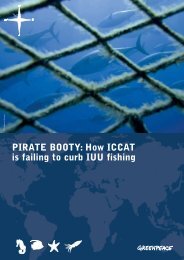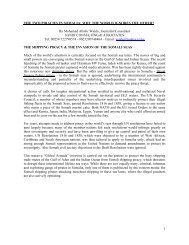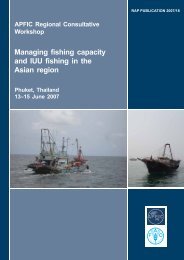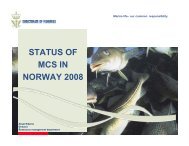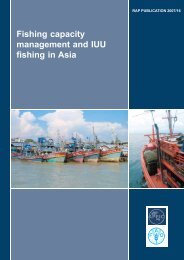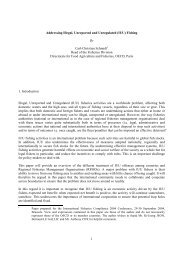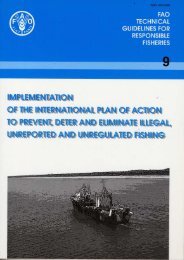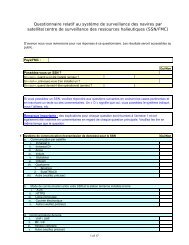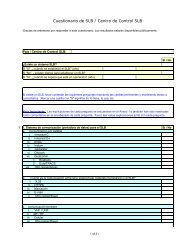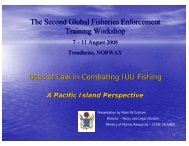Fishing Vessel Monitoring Systems: Past, Present and Future
Fishing Vessel Monitoring Systems: Past, Present and Future
Fishing Vessel Monitoring Systems: Past, Present and Future
You also want an ePaper? Increase the reach of your titles
YUMPU automatically turns print PDFs into web optimized ePapers that Google loves.
VMS: <strong>Past</strong>, <strong>Present</strong> <strong>and</strong> <strong>Future</strong> 23<br />
factor which restricts its use to very specific geographical <strong>and</strong> topological<br />
environments.<br />
4.2 independent verification at the FMC<br />
A final method of VMS verification could be carried out at the FMC <strong>and</strong> would be<br />
based upon rigorous analysis of VMS data, in an attempt to identify tampered<br />
data through the recognition of internal anomalies in that data. Though this<br />
approach might seem to be promising for its independence of other input, very<br />
little work has so far been done to advance such methodologies.<br />
By simply gathering <strong>and</strong> storing data, thus making it available in a timely manner<br />
to relevant personnel, VMS can significantly improve the efficiency of compliance<br />
operations: when patrol vessels <strong>and</strong> aircraft know where vessels are fishing, the<br />
time required to find them for purposes of verification <strong>and</strong> control is reduced to a<br />
minimum.<br />
4.3 Working at the FMC<br />
Were this the only advantage of VMS, it would probably still be worth the<br />
required investment in time <strong>and</strong> resources. But an FMC has the potential of<br />
supplementing this worth by taking an active role in detection of fishing violations.<br />
As many infractions of fisheries regulations have to do with fishing, or even being<br />
present, in unauthorised zones, VMS data can identify violators with a very high<br />
degree of accuracy. Still, the actual detection of fishing activity remains a less<br />
than scientific activity for a number of reasons, principally limited by the analytical<br />
capabilities of FMCs.<br />
In its current state, data analysis at an FMC is limited to manipulation of the data<br />
sets that are received: position (latitude <strong>and</strong> longitude) speed <strong>and</strong> course from<br />
the vessel end, sea charts <strong>and</strong> vessel records from the FMC end. A typical<br />
analytical script at an FMC might thus be to geographically delimit areas where<br />
fishing was restricted or forbidden, <strong>and</strong> then to create an alarm when a vessel<br />
reported a position that was 1) within the delimited area <strong>and</strong> 2) was reporting a<br />
speed that might be compatible with fishing activity.<br />
Useful as such analysis might be, it does require a trained operator to respond to<br />
the alarm, call up the vessel’s track, <strong>and</strong> make a personal determination as to the<br />
probability of actual fishing activity. In most cases, such judgements are<br />
relatively easy as the grid pattern movements of a trawler might be clearly visible,<br />
or the movements required for a longliner to lay out its line then return to its<br />
starting point <strong>and</strong> then retrace the path along which it was laid out, this time at<br />
much slower speed whilst fishing. The judgement of the operator becomes more



